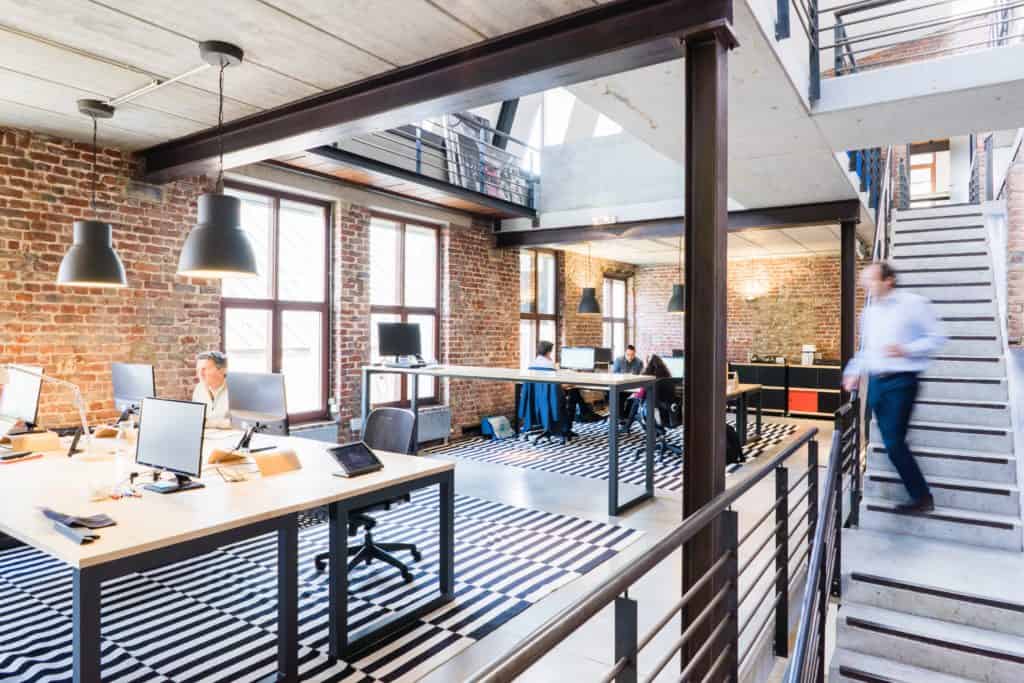
Many of us are trying to find our new normal amid the corona crisis. For some, this means heading back to the office after months of working remotely. From making a mental switch, to feeling physically safe, we’re going to face a number of challenges during the transition. In this article, we share 5 steps to help you and your employees transition back into office life successfully— and safely.
1. Implement good hygiene practices
The health and safety of employees should be your top priority. The World Health Organization (WHO) has detailed how workplaces can prevent the spread of disease, and you can find the official documentation here.
Key steps to follow include regularly sanitizing surface areas throughout the office, making hand sanitizing products readily available, and promoting physical distancing at all times. Of course, everyone should also be following government guidelines in the event of becoming ill or coming into contact with someone who is.
2. Keep your digital channels up and running
Since the beginning of the pandemic, many companies have amplified and accelerated digital ways of working. We have quickly adapted to online communication software, holding customer events online, and digitizing our processes. Don’t drop the ball on this, even if many employees are heading back to the office.
Firstly, we’re not out of the woods yet, so it’s good to know you can fall back on these practices quickly should you need to. Secondly, it’s unlikely that all of your employees will want, or be able, to return to the office immediately. And finally, it’s simply good practice. The future workplace looks set to be one of digitization and increased remote work, and keeping technology at the heart of your organization will help you to keep up with the competition.
3. Gather feedback from employees and prepare to be flexible
The COVID-19 pandemic is an unprecedented, global health crisis. Most people will never have experienced anything like this before. With that in mind, you should be empathetic to the needs and concerns of your employees. Open up a clear dialogue with your staff on both an individual and a team basis, allowing them to share any worries or suggestions with you. Are there individuals with health concerns? Are staff members concerned about commuting via public transport? Do certain individuals want the option to continue working remotely? What other anxieties are people facing because of this crisis?
The goal here is to come to a mutual agreement about how the transition will be managed successfully. If you have a Netigate account or free trial, you can make use of our COVID-19 survey template. Frequent pulse surveys are also a quick and easy way to collect ongoing feedback during the transition.
4. Communicate guidelines for returning to the office
Once you’ve gathered feedback from your employees and worked it into your plans, the next step is to share the guidelines you create. It’s essential that everyone involved in the company is aware of how the back-to-the-office transition will work. This includes freelancers, contractors, and any other contingent workers who may not be reachable via the internal company channels.
You should aim to share the guidelines in multiple different ways. This might include a company-wide video meeting, email, and group message. Managers should also discuss the guidelines within their teams, which will help to make sure peripheral workers across the company stay informed. It’s also wise to include the guidelines in the form of posters throughout the office space itself, which will act as constant reminders of the new health and safety protocols. Check WHO and your local government guidelines regularly, ensuring that your own strategy remains up to date.
5. Optimize the office space
For many companies, there will need to be a significant rethink of how office space is utilised whilst the pandemic continues. WHO recommends spacing desks at least 1 metre apart, but refer to your own government’s guidelines for additional guidance. When it comes to holding meetings, try to stick to teleconferencing or even host them outside if possible. In order to maintain social distancing, it may also be necessary to stagger the return to work, or split the workforce into groups and alternate their office attendance.
Like the digital practices we’ve come to embrace, these changes to the open-plan office might continue well into the future. In research carried out by Netigate, we found that two out of three people have enjoyed working from home during corona, and dislike open office environments. It could well be that the changes we begin to implement now will become a permanent feature in the future.
Covid-19 360° stakeholder reports
Netigate has launched 360° stakeholder reports to help you stay on top of your business. Allowing you to gather feedback from employees, customers, managers, board members and suppliers, you will have a 360 degree view of how well you are meeting the needs of your key stakeholders during the crisis. Click here to learn more.








 Copyright © 2024 Netigate AB, Drottninggatan 25, 111 51, Stockholm, Sverige
Copyright © 2024 Netigate AB, Drottninggatan 25, 111 51, Stockholm, Sverige 